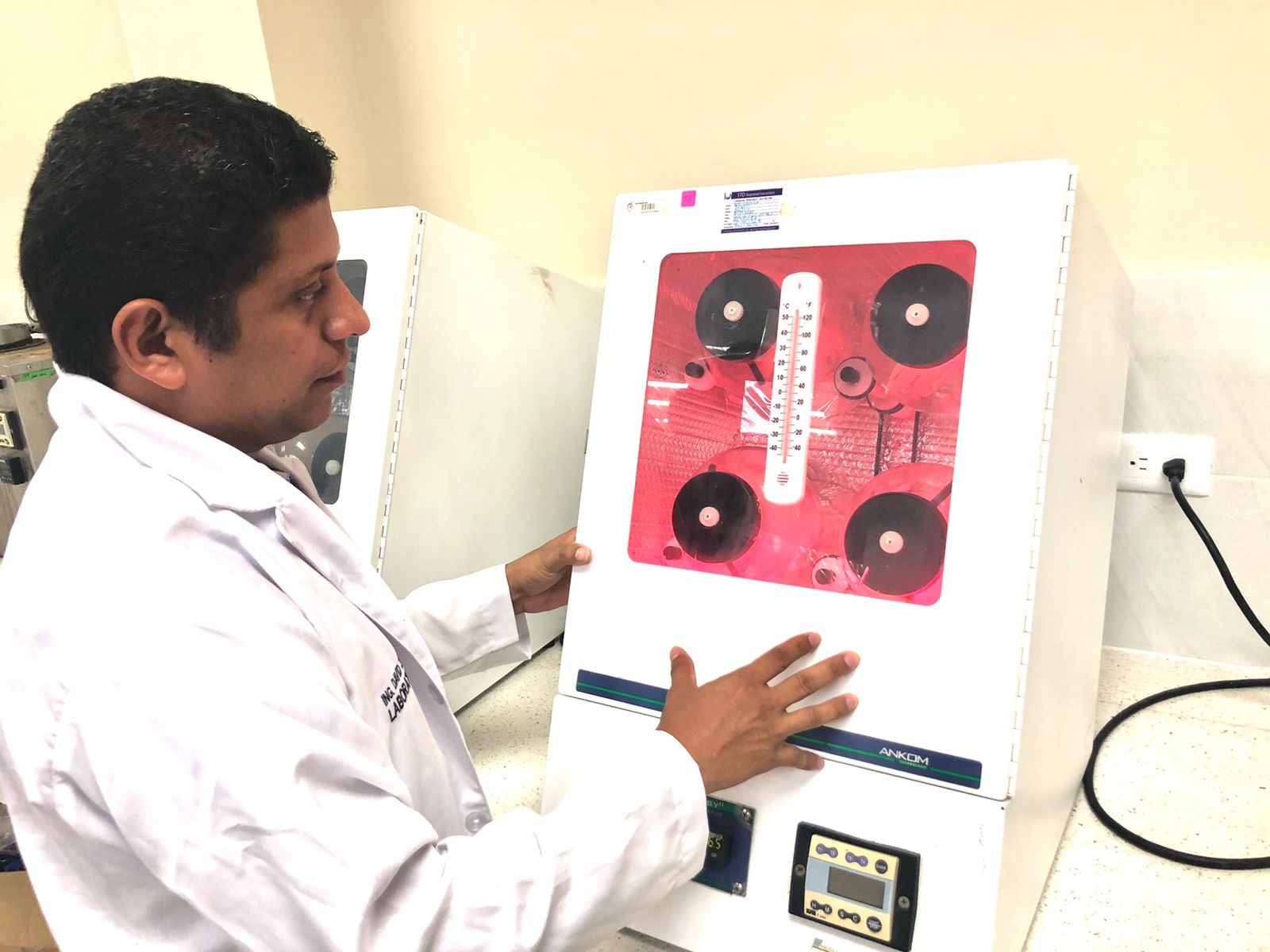In vitro ruminal degradation of Tithonia diversifolia
DOI:
https://doi.org/10.15517/am.v33i1.43206Keywords:
forage, animal nutrition, bushy, cutting ages, cell wallAbstract
Introduction. The Mocache canton (Ecuador) is a humid tropical zone, with a dry season of six months, which affects the availability and quality of forage, a situation that reduces the productive and reproductive capacity of ruminants. Objective. To evaluate the apparent in vitro ruminal degradation parameters of dry matter (DMD), organic matter (OMD), neutral detergent fiber (NDFD), and acid detergent fiber (ADFD) in Tithonia diversifolia harvested at four different cutting ages during the dry season. Materials and methods. The research was carried out at the “La María” Experimental Farm of the Universidad Tecnica Estatal de Quevedo, Ecuador, between August and October 2017. Four rumen fistulated bulls were used. A complete randomized design (CRD) was used. The treatments were: Tithonia diversifolia at 30 days of cutting (T1), Tithonia diversifolia at 45 days of cutting (T2), Tithonia diversifolia at 60 days of cutting (T3), and Tithonia diversifolia at 75 days of cutting (T4). The incubation times were: 3, 6, 12, 24, 48, and 72 hours with four replicates per treatment. The variables evaluated were: DMD, OMD, NFDD, and AFDD. Results. The ruminal degradation parameters showed statistical differences between treatments (p<0.05), with T1 the best DMD, OMD, NDFD, and ADFD were obtained with 36.66, 35.44, 43.16, and 41.55 %, respectively). Conclusion. The highest DMD, OMD, NDFD, and ADFD parameters were associated with the cutting ages and the structural components of the bromatological composition. The cutting age at 30 days in Tithonia diversifolia influenced the potential and the effective nutrients degradation. As the cutting ages increased, the ruminal degradation parameters decreased.
Downloads

Downloads
Additional Files
Published
How to Cite
Issue
Section
License
1. Proposed policy for open access journals
Authors who publish in this journal accept the following conditions:
a. Authors retain the copyright and assign to the journal the right to the first publication, with the work registered under the attribution, non-commercial and no-derivative license from Creative Commons, which allows third parties to use what has been published as long as they mention the authorship of the work and upon first publication in this journal, the work may not be used for commercial purposes and the publications may not be used to remix, transform or create another work.
b. Authors may enter into additional independent contractual arrangements for the non-exclusive distribution of the version of the article published in this journal (e.g., including it in an institutional repository or publishing it in a book) provided that they clearly indicate that the work was first published in this journal.
c. Authors are permitted and encouraged to publish their work on the Internet (e.g. on institutional or personal pages) before and during the review and publication process, as it may lead to productive exchanges and faster and wider dissemination of published work (see The Effect of Open Access).



























